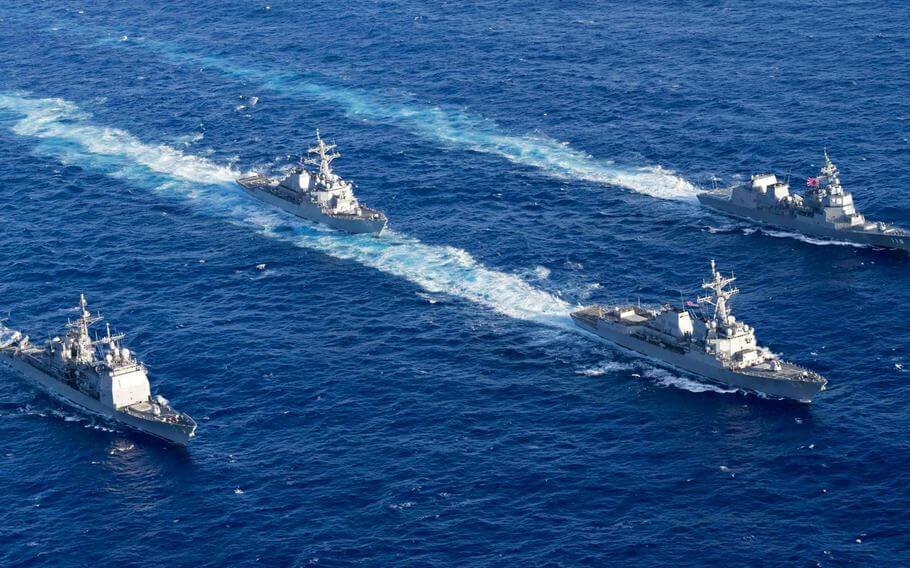Japan has made a significant move by sailing its warship, JS Sazanami, through the Taiwan Strait for the first time, alongside ships from Australia and New Zealand. This bold move challenges China’s claims over the strait and Taiwan. According to Japanese ministers, the destroyer was en route to a multilateral exercise in the South China Sea.
Japan’s decision to sail through the strait marks a shift in its policy of avoiding confrontation with China. For decades, Japan has been cautious not to upset China, which claims sovereignty and jurisdiction over the strait. However, recent increased military activity by China has prompted Japan to take a stronger stance.
Navigating Complex Waters
The Taiwan Strait is a critical trade route, with nearly half the global container fleet passing through it. The US and Taiwan consider it international waters, open to all naval vessels. However, Beijing disagrees, claiming it has sovereignty and jurisdiction over the strait.
Other countries have also begun to assert their freedom of navigation in the strait. The US Pacific fleet regularly transits the strait, joined recently by Canada, Australia, Britain, and France. Germany sailed two navy ships through the strait for the first time in decades, prompting China’s military to accuse Berlin of increasing security risks.
Japan’s move is part of a broader pattern of increased naval presence by countries concerned about China’s maritime assertions. Japan, in particular, has been dealing with China’s “grey zone” tactics in the East China Sea. These tactics aim to weaken an adversary over time.
The Quad group of nations – Japan, Australia, India, and the US – has pledged to expand cooperation on maritime security to counter China’s growing assertiveness in the South China Sea.
China’s response to Japan’s move has been muted, with state media reporting that the Chinese military tracked the vessels and had the situation under control. However, the incident highlights the complex and sensitive nature of regional relations.









